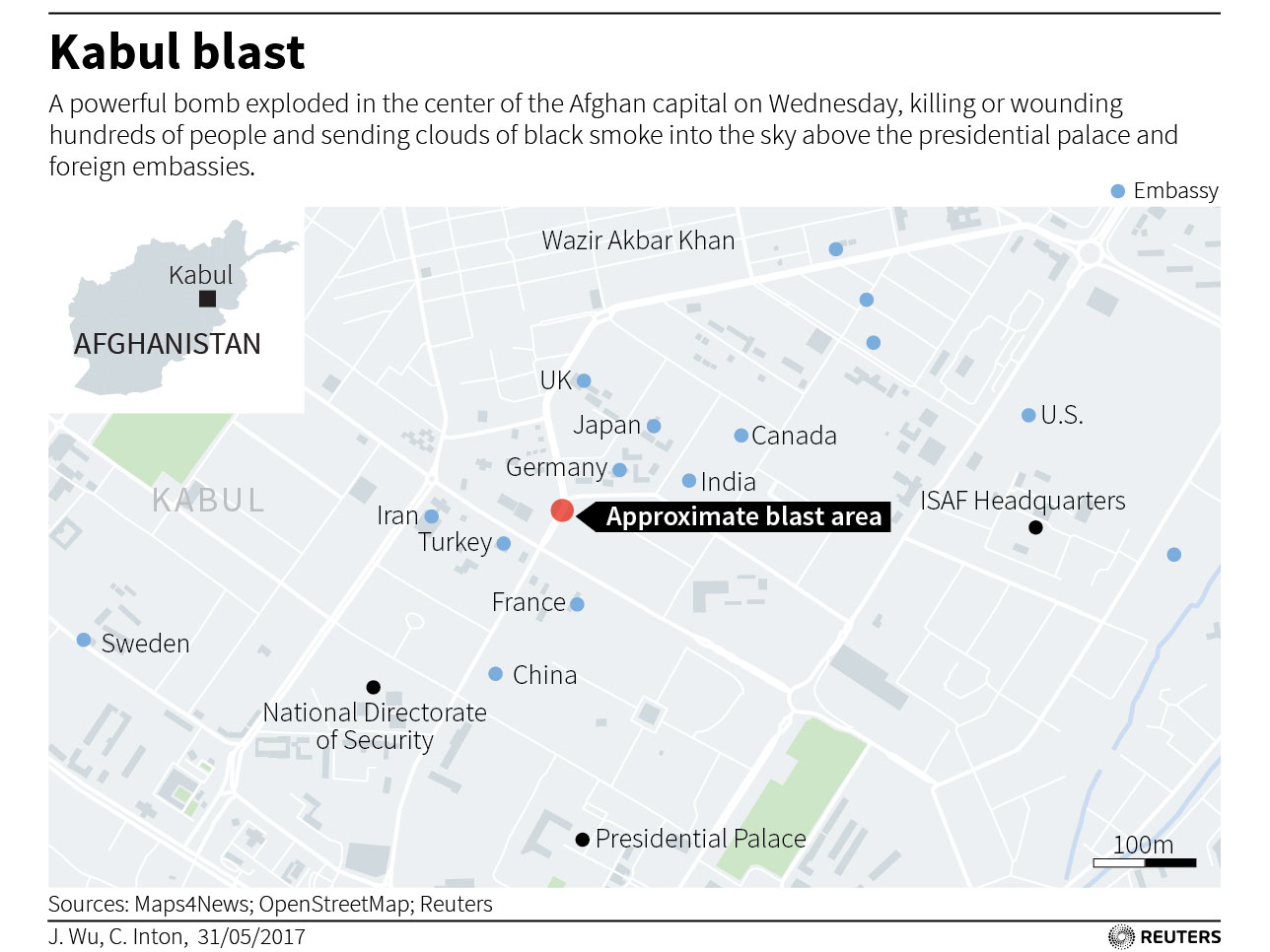
By James Mackenzie and Hamid Shalizi
KABUL (Reuters) – U.S. Defense Secretary Jim Mattis visited Kabul on Wednesday to pledge support for the government of President Ashraf Ghani, with the precarious security in the Afghan capital underlined by a rocket attack on the airport hours after he touched down.
Arriving from India, where he sought support for the U.S. administration’s new South Asia security plan, Mattis said the United States was determined not to allow “a merciless enemy to kill its way to power”.
Promising a more “holistic” approach without fixed timetables and involving other countries in the region, including Pakistan, he said the Taliban would have to learn they could not defeat the government.
“I want to reinforce to the Taliban that the only path to peace and political legitimacy for them is through a negotiated settlement,” Mattis told a joint news conference with Ghani and NATO Secretary General Jens Stoltenberg.
The visit comes after U.S. President Donald Trump announced a new strategy for Afghanistan, promising a stepped-up military campaign against Taliban insurgents who have gained ground as they seek to reestablish Islamic law after their 2001 ouster.
But a rocket attack on Kabul airport that injured five civilians and was claimed by both Islamic State and Taliban insurgents highlighted the rebels’ ability to strike the Western-backed government.
Fighters holed up in a nearby building continued to resist security forces for hours, a spokesman for the interior minister said.
Mattis condemned the attack as a “criminal act by terrorists”, adding that it was a “classic definition of what the Taliban are up to here now”.
There are now about 8,400 U.S. troops in Afghanistan as part of the 13,500-strong NATO-led Resolute Support mission advising and training Afghan forces as well as a separate counterterrorism mission, targeting Islamic State and Al Qaeda.
As part of the new strategy, which will give U.S. commanders greater freedom to use American firepower against the Taliban, Mattis has said the United States will send an additional 3,000 troops to help train Afghan security forces.
It will also make greater use of its air power to support Afghan forces and strike the Taliban, a strategy that carries the risk of an increase in civilian casualties.
“I don’t want to tell the enemy exactly what we are doing but the whole point is to make certain we have a compelling battlefield advantage over anything the Taliban tries to mass against your forces,” he said.
Mattis said U.S. forces would do “everything humanly possible” to limit civilian casualties, which fueled bitter disputes between Washington and the government of former President Hamid Karzai.
Trump has said he expects NATO allies to step up contributions of both troops and funding to the Afghanistan mission, and Stoltenberg said the credibility of the international alliance depended on maintaining its support.
“We know the cost of staying in Afghanistan,” he said. “But the cost of leaving would be higher. If NATO forces leave too soon, there is a risk Afghanistan may return to a state of chaos and once again become a safe haven for international terrorism.”
(Additional reporting by Mirwais Harooni and Mostafa Hashem in Cairo; Editing by Nick Macfie)








